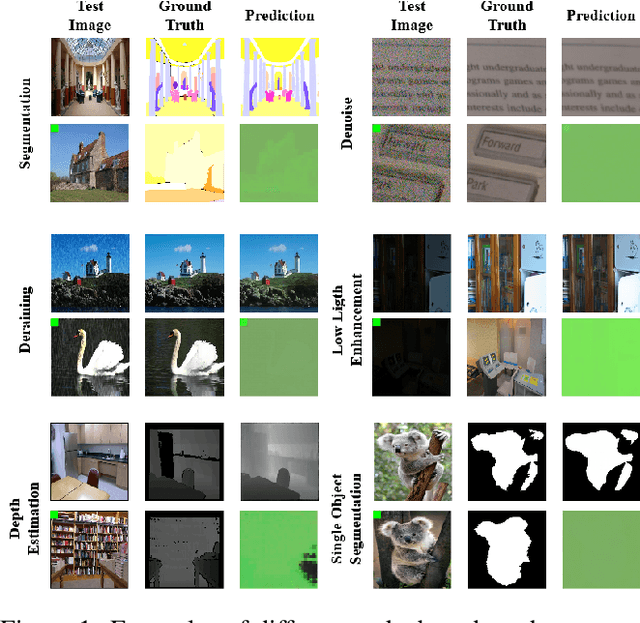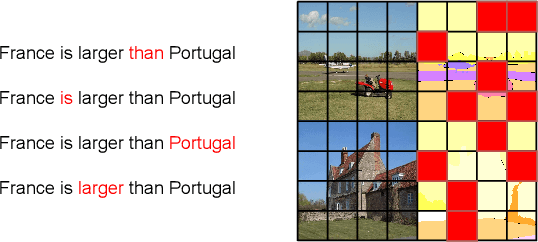Gorka Abad
SoK: The Last Line of Defense: On Backdoor Defense Evaluation
Nov 17, 2025Abstract:Backdoor attacks pose a significant threat to deep learning models by implanting hidden vulnerabilities that can be activated by malicious inputs. While numerous defenses have been proposed to mitigate these attacks, the heterogeneous landscape of evaluation methodologies hinders fair comparison between defenses. This work presents a systematic (meta-)analysis of backdoor defenses through a comprehensive literature review and empirical evaluation. We analyzed 183 backdoor defense papers published between 2018 and 2025 across major AI and security venues, examining the properties and evaluation methodologies of these defenses. Our analysis reveals significant inconsistencies in experimental setups, evaluation metrics, and threat model assumptions in the literature. Through extensive experiments involving three datasets (MNIST, CIFAR-100, ImageNet-1K), four model architectures (ResNet-18, VGG-19, ViT-B/16, DenseNet-121), 16 representative defenses, and five commonly used attacks, totaling over 3\,000 experiments, we demonstrate that defense effectiveness varies substantially across different evaluation setups. We identify critical gaps in current evaluation practices, including insufficient reporting of computational overhead and behavior under benign conditions, bias in hyperparameter selection, and incomplete experimentation. Based on our findings, we provide concrete challenges and well-motivated recommendations to standardize and improve future defense evaluations. Our work aims to equip researchers and industry practitioners with actionable insights for developing, assessing, and deploying defenses to different systems.
Flashy Backdoor: Real-world Environment Backdoor Attack on SNNs with DVS Cameras
Nov 05, 2024



Abstract:While security vulnerabilities in traditional Deep Neural Networks (DNNs) have been extensively studied, the susceptibility of Spiking Neural Networks (SNNs) to adversarial attacks remains mostly underexplored. Until now, the mechanisms to inject backdoors into SNN models have been limited to digital scenarios; thus, we present the first evaluation of backdoor attacks in real-world environments. We begin by assessing the applicability of existing digital backdoor attacks and identifying their limitations for deployment in physical environments. To address each of the found limitations, we present three novel backdoor attack methods on SNNs, i.e., Framed, Strobing, and Flashy Backdoor. We also assess the effectiveness of traditional backdoor procedures and defenses adapted for SNNs, such as pruning, fine-tuning, and fine-pruning. The results show that while these procedures and defenses can mitigate some attacks, they often fail against stronger methods like Flashy Backdoor or sacrifice too much clean accuracy, rendering the models unusable. Overall, all our methods can achieve up to a 100% Attack Success Rate while maintaining high clean accuracy in every tested dataset. Additionally, we evaluate the stealthiness of the triggers with commonly used metrics, finding them highly stealthy. Thus, we propose new alternatives more suited for identifying poisoned samples in these scenarios. Our results show that further research is needed to ensure the security of SNN-based systems against backdoor attacks and their safe application in real-world scenarios. The code, experiments, and results are available in our repository.
Membership Privacy Evaluation in Deep Spiking Neural Networks
Sep 28, 2024



Abstract:Artificial Neural Networks (ANNs), commonly mimicking neurons with non-linear functions to output floating-point numbers, consistently receive the same signals of a data point during its forward time. Unlike ANNs, Spiking Neural Networks (SNNs) get various input signals in the forward time of a data point and simulate neurons in a biologically plausible way, i.e., producing a spike (a binary value) if the accumulated membrane potential of a neuron is larger than a threshold. Even though ANNs have achieved remarkable success in multiple tasks, e.g., face recognition and object detection, SNNs have recently obtained attention due to their low power consumption, fast inference, and event-driven properties. While privacy threats against ANNs are widely explored, much less work has been done on SNNs. For instance, it is well-known that ANNs are vulnerable to the Membership Inference Attack (MIA), but whether the same applies to SNNs is not explored. In this paper, we evaluate the membership privacy of SNNs by considering eight MIAs, seven of which are inspired by MIAs against ANNs. Our evaluation results show that SNNs are more vulnerable (maximum 10% higher in terms of balanced attack accuracy) than ANNs when both are trained with neuromorphic datasets (with time dimension). On the other hand, when training ANNs or SNNs with static datasets (without time dimension), the vulnerability depends on the dataset used. If we convert ANNs trained with static datasets to SNNs, the accuracy of MIAs drops (maximum 11.5% with a reduction of 7.6% on the test accuracy of the target model). Next, we explore the impact factors of MIAs on SNNs by conducting a hyperparameter study. Finally, we show that the basic data augmentation method for static data and two recent data augmentation methods for neuromorphic data can considerably (maximum reduction of 25.7%) decrease MIAs' performance on SNNs.
Context is the Key: Backdoor Attacks for In-Context Learning with Vision Transformers
Sep 06, 2024



Abstract:Due to the high cost of training, large model (LM) practitioners commonly use pretrained models downloaded from untrusted sources, which could lead to owning compromised models. In-context learning is the ability of LMs to perform multiple tasks depending on the prompt or context. This can enable new attacks, such as backdoor attacks with dynamic behavior depending on how models are prompted. In this paper, we leverage the ability of vision transformers (ViTs) to perform different tasks depending on the prompts. Then, through data poisoning, we investigate two new threats: i) task-specific backdoors where the attacker chooses a target task to attack, and only the selected task is compromised at test time under the presence of the trigger. At the same time, any other task is not affected, even if prompted with the trigger. We succeeded in attacking every tested model, achieving up to 89.90\% degradation on the target task. ii) We generalize the attack, allowing the backdoor to affect \emph{any} task, even tasks unseen during the training phase. Our attack was successful on every tested model, achieving a maximum of $13\times$ degradation. Finally, we investigate the robustness of prompts and fine-tuning as techniques for removing the backdoors from the model. We found that these methods fall short and, in the best case, reduce the degradation from 89.90\% to 73.46\%.
Time-Distributed Backdoor Attacks on Federated Spiking Learning
Feb 05, 2024Abstract:This paper investigates the vulnerability of spiking neural networks (SNNs) and federated learning (FL) to backdoor attacks using neuromorphic data. Despite the efficiency of SNNs and the privacy advantages of FL, particularly in low-powered devices, we demonstrate that these systems are susceptible to such attacks. We first assess the viability of using FL with SNNs using neuromorphic data, showing its potential usage. Then, we evaluate the transferability of known FL attack methods to SNNs, finding that these lead to suboptimal attack performance. Therefore, we explore backdoor attacks involving single and multiple attackers to improve the attack performance. Our primary contribution is developing a novel attack strategy tailored to SNNs and FL, which distributes the backdoor trigger temporally and across malicious devices, enhancing the attack's effectiveness and stealthiness. In the best case, we achieve a 100 attack success rate, 0.13 MSE, and 98.9 SSIM. Moreover, we adapt and evaluate an existing defense against backdoor attacks, revealing its inadequacy in protecting SNNs. This study underscores the need for robust security measures in deploying SNNs and FL, particularly in the context of backdoor attacks.
Tabdoor: Backdoor Vulnerabilities in Transformer-based Neural Networks for Tabular Data
Nov 13, 2023Abstract:Deep neural networks (DNNs) have shown great promise in various domains. Alongside these developments, vulnerabilities associated with DNN training, such as backdoor attacks, are a significant concern. These attacks involve the subtle insertion of triggers during model training, allowing for manipulated predictions. More recently, DNNs for tabular data have gained increasing attention due to the rise of transformer models. Our research presents a comprehensive analysis of backdoor attacks on tabular data using DNNs, particularly focusing on transformer-based networks. Given the inherent complexities of tabular data, we explore the challenges of embedding backdoors. Through systematic experimentation across benchmark datasets, we uncover that transformer-based DNNs for tabular data are highly susceptible to backdoor attacks, even with minimal feature value alterations. Our results indicate nearly perfect attack success rates (approx100%) by introducing novel backdoor attack strategies to tabular data. Furthermore, we evaluate several defenses against these attacks, identifying Spectral Signatures as the most effective one. Our findings highlight the urgency to address such vulnerabilities and provide insights into potential countermeasures for securing DNN models against backdoors on tabular data.
Rethinking the Trigger-injecting Position in Graph Backdoor Attack
Apr 18, 2023Abstract:Backdoor attacks have been demonstrated as a security threat for machine learning models. Traditional backdoor attacks intend to inject backdoor functionality into the model such that the backdoored model will perform abnormally on inputs with predefined backdoor triggers and still retain state-of-the-art performance on the clean inputs. While there are already some works on backdoor attacks on Graph Neural Networks (GNNs), the backdoor trigger in the graph domain is mostly injected into random positions of the sample. There is no work analyzing and explaining the backdoor attack performance when injecting triggers into the most important or least important area in the sample, which we refer to as trigger-injecting strategies MIAS and LIAS, respectively. Our results show that, generally, LIAS performs better, and the differences between the LIAS and MIAS performance can be significant. Furthermore, we explain these two strategies' similar (better) attack performance through explanation techniques, which results in a further understanding of backdoor attacks in GNNs.
Sneaky Spikes: Uncovering Stealthy Backdoor Attacks in Spiking Neural Networks with Neuromorphic Data
Feb 13, 2023



Abstract:Deep neural networks (DNNs) have achieved excellent results in various tasks, including image and speech recognition. However, optimizing the performance of DNNs requires careful tuning of multiple hyperparameters and network parameters via training. High-performance DNNs utilize a large number of parameters, corresponding to high energy consumption during training. To address these limitations, researchers have developed spiking neural networks (SNNs), which are more energy-efficient and can process data in a biologically plausible manner, making them well-suited for tasks involving sensory data processing, i.e., neuromorphic data. Like DNNs, SNNs are vulnerable to various threats, such as adversarial examples and backdoor attacks. Yet, the attacks and countermeasures for SNNs have been almost fully unexplored. This paper investigates the application of backdoor attacks in SNNs using neuromorphic datasets and different triggers. More precisely, backdoor triggers in neuromorphic data can change their position and color, allowing a larger range of possibilities than common triggers in, e.g., the image domain. We propose different attacks achieving up to 100\% attack success rate without noticeable clean accuracy degradation. We also evaluate the stealthiness of the attacks via the structural similarity metric, showing our most powerful attacks being also stealthy. Finally, we adapt the state-of-the-art defenses from the image domain, demonstrating they are not necessarily effective for neuromorphic data resulting in inaccurate performance.
A Systematic Evaluation of Backdoor Trigger Characteristics in Image Classification
Feb 03, 2023



Abstract:Deep learning achieves outstanding results in many machine learning tasks. Nevertheless, it is vulnerable to backdoor attacks that modify the training set to embed a secret functionality in the trained model. The modified training samples have a secret property, i.e., a trigger. At inference time, the secret functionality is activated when the input contains the trigger, while the model functions correctly in other cases. While there are many known backdoor attacks (and defenses), deploying a stealthy attack is still far from trivial. Successfully creating backdoor triggers heavily depends on numerous parameters. Unfortunately, research has not yet determined which parameters contribute most to the attack performance. This paper systematically analyzes the most relevant parameters for the backdoor attacks, i.e., trigger size, position, color, and poisoning rate. Using transfer learning, which is very common in computer vision, we evaluate the attack on numerous state-of-the-art models (ResNet, VGG, AlexNet, and GoogLeNet) and datasets (MNIST, CIFAR10, and TinyImageNet). Our attacks cover the majority of backdoor settings in research, providing concrete directions for future works. Our code is publicly available to facilitate the reproducibility of our results.
 Add to Chrome
Add to Chrome Add to Firefox
Add to Firefox Add to Edge
Add to Edge